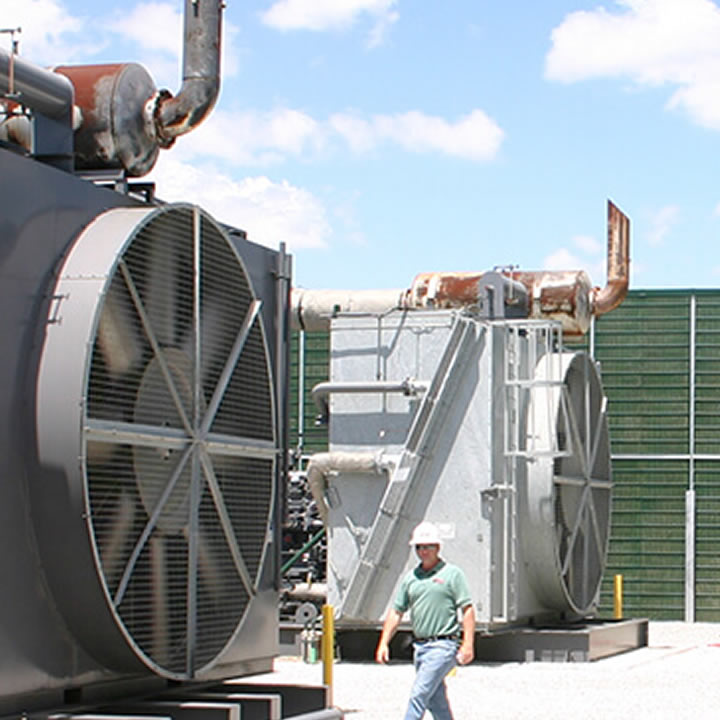Cooling towers play a vital role in various industries, helping regulate temperatures and maintain operational efficiency. However, the noise generated by these cooling systems can pose challenges, impacting both the immediate surroundings and the well-being of individuals nearby.
In this article, we explore the concept of cooling tower noise control, understanding its significance, methods, and the positive impact it can have on the overall acoustic environment.
The Significance of Cooling Tower Noise Control
Mitigating Disturbances:
- Cooling towers, essential for heat dissipation, often produce noise levels that can disturb nearby residents or workers.
- Implementing noise control measures becomes crucial to creating a harmonious coexistence between industrial operations and the surrounding environment.
Compliance with Regulations:
- Many regions have regulations in place to limit noise pollution from industrial activities.
- Cooling tower noise control measures ensure compliance with these regulations, avoiding potential legal consequences.
Understanding Cooling Tower Noise
Noise Sources:
- Cooling tower noise primarily arises from moving air, water, and mechanical components.
- The interaction between these elements creates sound waves that contribute to the overall noise output.
Frequency Spectrum:
- Cooling tower noise often covers a broad frequency spectrum.
- This can include low-frequency noise from rotating machinery and higher-frequency noise from airflow and water movement.
Methods of Cooling Tower Noise Control
Acoustic Enclosures:
Principle: Acoustic enclosures are structures designed to contain and reduce noise emissions from cooling towers. These enclosures act as a barrier, preventing noise from spreading to the surrounding area.
Benefits: Effective in minimizing both low and high-frequency noise. Can be customized to fit specific cooling tower configurations.
Absorptive Silencers:
Principle: Absorptive silencers are designed to absorb sound energy, reducing the overall noise output of the cooling tower. These silencers are strategically placed in the airflow path to attenuate noise.
Benefits: Targeted reduction of specific frequency ranges. It can be integrated into existing cooling tower systems.
Vibration Isolation:
Principle: Vibration isolation involves isolating the cooling tower from the surrounding structure to minimize the transmission of vibrations and noise. This is achieved through the use of isolators and damping materials.
Benefits: Effectively reduces structure-borne noise. Enhances the overall stability and performance of the cooling tower.
Fan Blade Modifications:
Principle: Modifying the design of cooling tower fan blades can impact aerodynamics and noise generation. Adjustments in blade shape and spacing can influence the noise characteristics.
Benefits: Targets noise generation at the source. Offers a cost-effective solution when compared to structural modifications.
Assessing Cooling Tower Noise Control Solutions
Noise Monitoring: Conduct thorough noise monitoring assessments before implementing control measures. Identify specific noise sources and frequencies to tailor solutions accordingly.
Engineering Analysis: Engage in engineering analysis to determine the most effective combination of noise control measures. Consider factors such as airflow patterns, structural resonance, and environmental conditions.
The Positive Impact of Effective Cooling Tower Noise Control
Improved Community Relations:
Reduced Noise Complaints: Implementing effective noise control measures reduces the likelihood of complaints from nearby residents. Fosters positive relations between industries and the surrounding community.
Enhanced Reputation: Companies that prioritize noise control demonstrate environmental responsibility. Enhances the reputation of the industry as a considerate neighbor.
Employee Well-being:
Reduced Occupational Noise Exposure: Noise control measures contribute to a healthier work environment for employees. Reduces the risk of occupational noise-related health issues.
Increased Productivity: A quieter workplace promotes better concentration and communication among employees. Enhances overall productivity and job satisfaction.
Environmental Sustainability:
Compliance with Standards: Adhering to noise control regulations aligns with broader environmental sustainability goals. Demonstrates commitment to responsible industrial practices.
Reduced Environmental Impact: Effective cooling tower noise control minimizes the impact of industrial activities on the surrounding ecosystem. Supports biodiversity and ecological balance.
Challenges and Considerations
Cost Considerations: Implementing comprehensive noise control measures may involve initial costs. However, considering the long-term benefits and potential legal implications, the investment is often justified.
Tailoring Solutions: Cooling tower noise control solutions should be tailored to the specific characteristics of each cooling tower system. An individualized approach ensures optimal effectiveness.
Conclusion
Cooling tower noise control is a multifaceted endeavor that combines engineering precision, environmental responsibility, and a commitment to community well-being.
By understanding the sources of cooling tower noise and employing targeted control measures, industries can comply with regulations and contribute to a more harmonious coexistence with their surroundings.
Effective noise control goes beyond mere compliance – it creates a positive ripple effect, fostering better community relations, enhancing employee well-being, and contributing to broader environmental sustainability goals.
As industries continue to evolve, the integration of advanced cooling tower noise control measures stands as a testament to a commitment to progress that considers both people and the planet.

